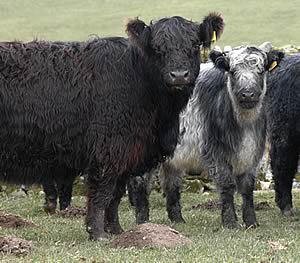 |
|||||||||
|
|||||||||||||||||||
Clostridial Disease
Losses Being Masked
|
|||||||||||||||||||
 |
That’s the view of clostridial disease consultant to the Veterinary Laboratories Agency (VLA) Cattle Group, David Harwood. “Sporadic deaths of one or two animals quite often go unreported by farmers and as a result relatively little confirmatory diagnostic work takes place for clostridial disease by the VLA Regional Laboratories. Even so, our suspicion is that clostridial diseases account for a significant proportion of the unexplained sudden stock deaths that cattle farmers experience,” he points out.
To try and assess the extent of unexplained sudden stock deaths, independent researchers sponsored by Schering-Plough Animal Health recently contacted over 200 dairy and beef producers in England, Scotland and Wales. Whilst a baseline of one in five farmers were able to confirm they had definitely had cattle die at some stage from a clostridial disease, significantly over 50% reported the loss one or more animals to unexplained sudden death during the last three years.
According to David Harwood, the drive for improved biosecurity post FMD has done much to ward off disease on many dairy and beef units, but it has had no real impact on clostridial problems.
“Quarantine and running closed herds will not prevent clostridial disease. Even healthy animals carry the potential for clostridial infection, which can suddenly become pathogenic in the right circumstances. Disease is most often associated with some exciting cause or trigger factor for clostridial organisms lying dormant in the host or host environment to multiply. The only way to prevent clostridial disease happening is to remove or control these trigger factors – which is well nigh impossible – or vaccinate,” he points out.
There are a number of clostridial diseases that kill calves and adult cattle with little, if any, warning signs. Clostridial organisms are responsible for diseases like blackleg, black disease and tetanus, but there may be up to ten different pathogens that can be a threat on UK farms.
“Treatment options for these diseases are extremely limited, highly costly and have very limited success rates,” David Harwood says. “And because of the rapid onset of clostridial diseases – and tissue damage before symptoms are visible, broad-spectrum vaccination is the only control option.
![]() TB
measures too little, too late
TB
measures too little, too late
![]() Defra
TB Plan Must Support Scottish Approach
Defra
TB Plan Must Support Scottish Approach
![]() Badger
trust welcomes TB testing
Badger
trust welcomes TB testing

BPS | property | organisations | site map